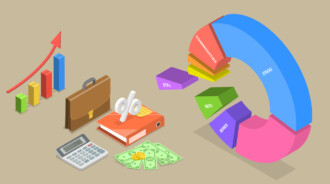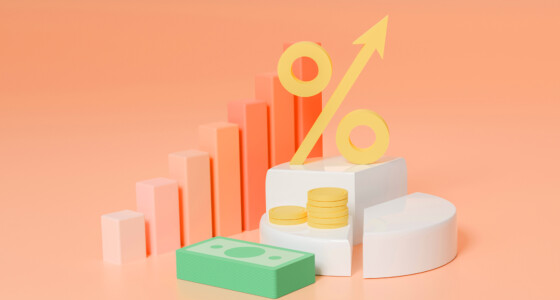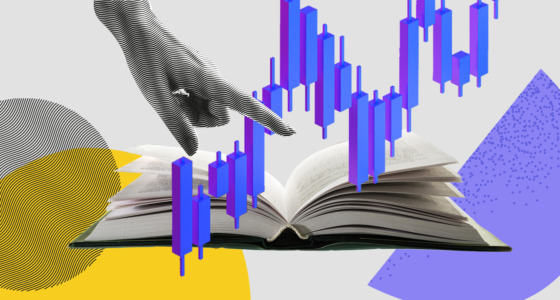

The following article will explore the difference between micro and macroeconomics. We will also answer some FAQs about these terms.
The difference between microeconomics and macroeconomics
There are two subcategories of economics:
- Macroeconomics examines the actions of nations and governments.
- Microeconomics focuses on studying people and company decisions.
Despite their apparent differences, these two areas of economics are, in fact, interrelated and beneficial to each other.
While macroeconomics examines choices by governments and nations, microeconomics analyses individual and company decisions. Macroeconomics employs a top-down perspective to examine the economy in its entirety to ascertain its direction and other factors. In contrast, microeconomics takes a bottom-up strategy by emphasising demand, supply, and other factors affecting price levels.
Microeconomics
Microeconomics refers to the research into how people and organisations allocate resources and establish the prices at which goods and services exchange occurs. It takes into account government laws, taxes, and regulations.
Supply and demand, as well as other factors that affect price levels throughout the economy, are the main topics of microeconomics. It approaches economic analysis from the bottom up. In simple words, microeconomics aims to comprehend human actions, resource allocation, and choices.
Here are some of the basic principles of microeconomics:
- Production costs. Following this concept, the price of a product or service depends on how much it costs to produce it.
- Supply, demand, and equilibrium. The law of demand and supply governs how much anything costs. Providers provide the exact price customers want in a market with perfect competition. It brings about economic balance.
- Production theory. This idea examines the process of making products or manufacturing them.
- Labor economics. This concept examines employees and employers to comprehend wage, income trends, and employment. Microeconomic rules don’t start with actual research; instead, they follow a collection of related principles and theorems.
So, microeconomics does not attempt to consider or explain the dynamics that must operate in the market. Instead, it seeks to describe what will happen when specific changes occur. For example, microeconomics studies how a business can maximize its capacity and output to reduce costs and remain competitive.
Macroeconomics
Macroeconomics examines a nation’s behaviour and how its policy influences the economy in its entirety. Since it looks at entire economies and sectors instead of single people or firms, it is a top-down approach. Macroeconomics attempts to respond to queries like “What the inflation rate should be?” and “What encourages the economy’s growth?”.
Governments and organizations utilize macroeconomics to develop fiscal and economic policy because it concentrates on statistics and econometric connections. Investors who purchase assets susceptible to interest rates must closely monitor fiscal and monetary policies.
Note! Macroeconomics studies how changes in net exports affect a country’s capital account or the way the rate of unemployment affects GDP.

Investors and Microeconomics vs. Macroeconomics
Although individual investors would better concentrate on microeconomics, macroeconomics must not be wholly disregarded. The appropriate place for economic analysis could be a source of disagreement among technical and fundamental investors. Microeconomics is much more likely to influence specific assets, but macroeconomic issues can affect whole portfolios.
Famed Warren Buffett said that macroeconomic projections had little bearing on his stock selection. Buffett responded: “Charlie and I do not even pay heed to macroeconomic forecasts”, when questioned about how he and his partner chose assets. He added: “Since we’ve been coworkers for 54 years, I can’t recall ever discussing macroeconomic issues when we decided on a stock or firm”.
Another well-known and accomplished value investor, John Templeton, had a similar viewpoint. In 1978, he said in a famous magazine: “I rarely ask if the marketplace is going to climb or go downwards since I don’t know, and it does not matter”. I look for equities in every country, asking, “Where’s the one that is least priced relative to what I feel it is worth?”.
Frequently Asked Questions (FAQ)
Can macroeconomic factors affect my investment portfolio?
Macroeconomic circumstances can significantly impact your investing portfolio. For instance, the burst of the property bubble in the United States and the following verging-on-collapse of banking firms with substantial investments in U.S. subprime mortgages was responsible for the Global Recession of 2008-2009 and the ensuing market meltdown.
What is a global macro strategy?
A global macro strategy is an investing and trading plan based on significant macroeconomic occurrences at the local, regional, or international levels. “Global Macro” refers to studying and evaluating various macroeconomic variables, such as interest rates, currency values, governmental activities, and international relations.
What is the main difference between microeconomics and macroeconomics?
The main difference between micro and macroeconomics is that the former studies how people and businesses decide how to allocate limited resources. The analysis of the economy as a whole is known as macroeconomics.
How do supply and demand affect stock prices?
Stock prices are influenced by supply and demand and other microeconomic theories, both directly and indirectly.
The demand and supply for the underlying company’s goods and services determine the indirect effect. A firm may be on a positive profit trajectory if its items are selling well due to the high demand, which would probably result in a higher valuation for its shares. However, the company’s earnings can fall short of expectations, and the stock price might plunge if there is too much stock (or supply) of its items and demand is weak.
The effect of supply and demand imbalances on stock prices can be used to determine the direct impact. Stocks increase when demand exceeds supply because there are more buyers than sellers; on the other hand, stocks fall when supply exceeds demand, as there are more sellers than buyers.
Does my portfolio performance depend on both microeconomic and macroeconomic factors?
Yes, both microeconomic and macroeconomic issues impact how well your portfolio performs. Demand and supply, regulations and taxes, as well as macroeconomic determinants like the growth of GDP, interest rates, and inflation, all have a substantial impact on various economic sectors and, consequently, an investment portfolio.
The bottom line
Understanding the micro and macroeconomic differences can help you become a better investor and comprehend how an economy works. Remember that while macroeconomics studies the decisions made by countries and governments, microeconomics focuses on the choices of individuals and businesses.







